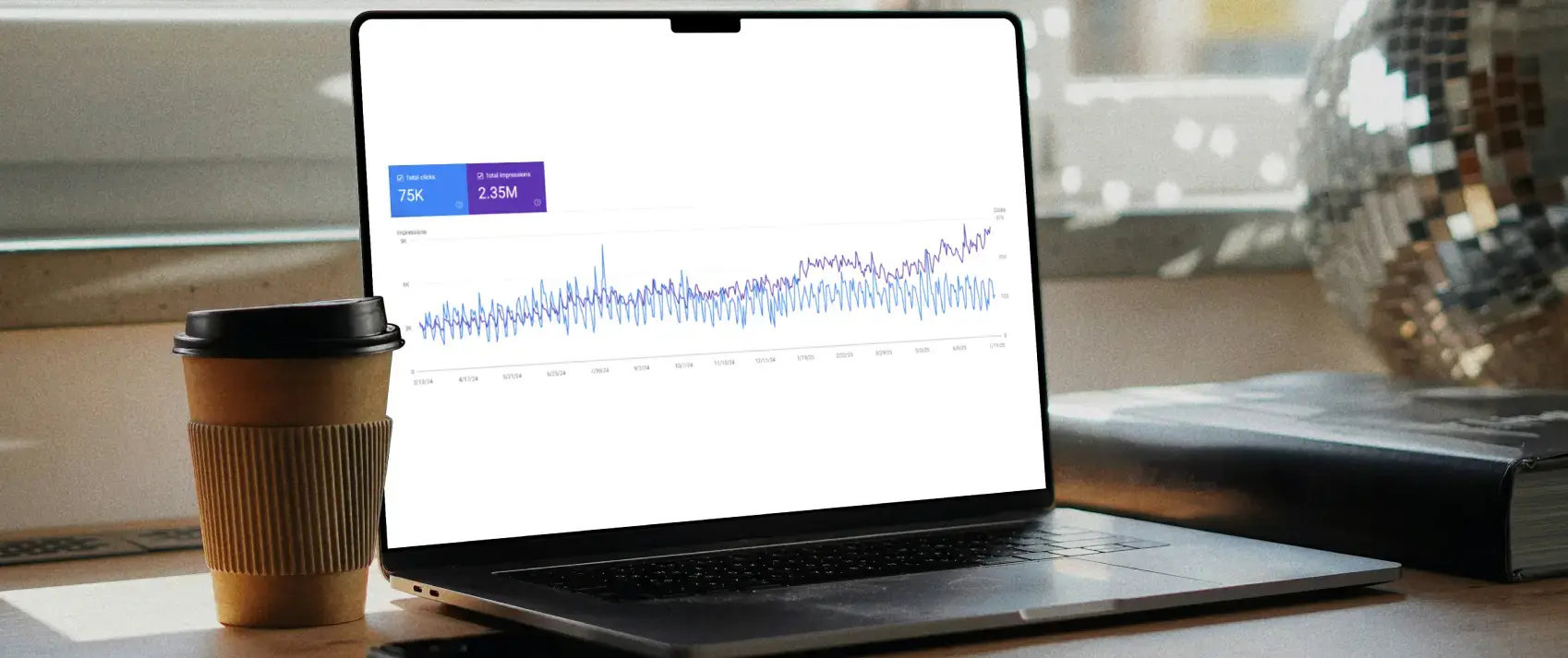Businesses across the globe are witnessing something unprecedented with their websites: search impressions are climbing higher than ever, but their click-through rates are declining. The widespread phenomenon is what digital marketers and SEOs have dubbed “the great decoupling.”
The culprit? AI-powered search results.
Why Impressions Are Up and Website Traffic Is Down
Since Google rolled out its AI Overviews last May, websites have seen an increase in impressions (how often their content appears in search results), while clicks through to the website have dropped. This suggests users are seeing the content, likely within AI Overviews, but not clicking through to the source website as frequently as before.
The result is a global trend of “zero-click searches” – queries where users find exactly what they need without ever leaving Google. Your content is being seen (hence the increased impressions), but it’s being consumed within Google’s ecosystem rather than driving to your website.
This Google Search Console (GSC) screenshot illustrates the growing gap between impressions (purple) and clicks (blue).

Many other digital marketers and SEOs are also posting very similar screenshots of GSC reports.
This pattern is evident across numerous industries. As an example, visits to many major US news websites have plummeted. A recent New York Post article reported that of the top 50 news domains, 37 suffered year-over-year traffic declines, with some plunging 40% since last May.
Some Hate It, Some Love It
On one side, publishers and content creators are fighting back.
A coalition of independent European publishers filed a formal antitrust complaint against Google in June, arguing that AI Overviews represent an abuse of market dominance. Their complaint to the European Commission claims that Google's AI feature harms publishers by "extracting information from their content and displaying it directly on search results pages, sharply reducing user traffic and threatening the financial viability of independent journalism."
But Google paints a different picture.
The company maintains that user feedback demonstrates higher satisfaction with AI-powered search results. According to Google, “User feedback shows that with AI Overviews, people have higher satisfaction with their search results, and they’re asking longer, more complex questions that they know Google can now help with.”
Google responded by adding another AI feature – AI Mode, which rolled out to all US users in June.

The Reality
AI-powered search is here to stay, whether you love it or hate it. This isn't a temporary experiment that Google will abandon – it's the future of how people find and consume information online. It’s the most significant shift in search behavior since Google first launched in 1998.
Like any significant change, it may make you wiggle. But what makes you wiggle can also bring opportunity.
As this AI technology continues to evolve, it will take some time to settle into place. The foundation is still being built, and the rules of engagement are still being written.
In the meantime, digital marketers, SEOs and business owners need to be agile and ready to respond.
What Are We Doing at Marketing Essentials?
When AI features rolled out, our SEO team immediately recognized this wasn’t just a trend – it was a big shakeup in SEO. The future of SEO is no longer just about ranking on Google or gaining traffic through organic search. It’s about visibility and understanding how AI is transforming the way people search for information.
Therefore, we’ve been adapting our SEO strategies accordingly, placing more emphasis on data analysis, research and strategies that align with AI’s impact on search. While AI tools are changing how search works, they haven’t replaced the need for a well-executed SEO strategy.
Here’s Our Recommendations for How to Adapt
Diversify Your Online Presence
It's more critical than ever to strengthen all aspects of your marketing efforts. A robust, multi-channel presence gives AI systems more touchpoints to recognize your company's authority and increases your chances of being included in AI overviews.
Publish High-Quality, Comprehensive Content
Content needs to be both original and thorough. If you don't comprehensively address your business, products or services, one of two things will happen: either someone else will fill that void, or AI will make assumptions and fill in the blanks itself.
Provide Useful Resources
Focus on creating resources that solve real problems for your audience. This includes detailed FAQs, authentic reviews, comprehensive comparison charts, and transparent pricing information. These resources demonstrate expertise and provide the kind of authoritative information AI systems prefer to reference.
Strengthen Your Brand Recognition
When users search for a brand by name, Google is less likely to intervene with AI overviews. These branded searches are holding steady and, in many cases, actually growing. Building brand recognition becomes increasingly valuable in an AI-dominated search landscape.
Prioritize Public Relations
Pay attention to what's happening beyond your website. The "popularity contest" aspect of search has intensified, significantly influencing whether you'll appear in AI-generated content. Public relations is experiencing a major resurgence in SEO importance as off-site signals become more critical for AI recognition.
Expand Your KPIs
Broaden your measurement approach beyond traditional metrics. If you're only monitoring organic clicks or sessions, you might paint an unnecessarily dire picture of your performance. Start tracking a variety of metrics to maintain a pulse on your visibility, including impressions, traffic from large language models, and visibility in AI-generated responses.
The great decoupling represents more than just a shift in search – it's a transformation in how information flows between businesses and consumers. While the immediate impact may feel unsettling, history shows us that businesses that adapt quickly to major technological changes often emerge stronger.
Success will require agility, strategic thinking and a willingness to measure success differently than we have in the past.


